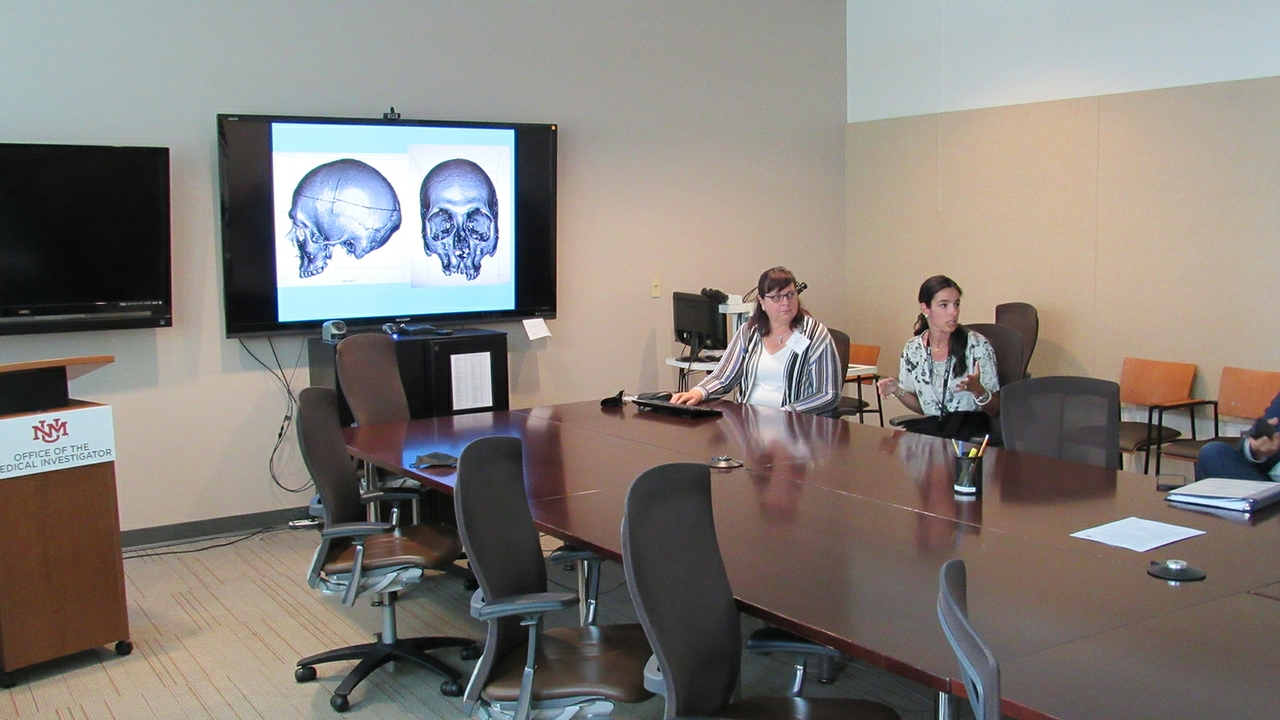NMDID supports worldwide research during COVID-19 pandemic
In February of 2020, Professor and Forensic Anthropologist Heather Edgar, in association with Western Michigan University Associate Professor Shamsi Berry and the Center for Advanced Research Computing, unveiled a groundbreaking new website that gives researchers across the globe access to the demographic information and deidentified complete body scans of over 15,000 deceased New Mexicans. The site, called the New Mexico Decedent Image Database (NMDID), is the first of its kind. Now, after its first 20 months of operations, Edgar and Berry are preparing to publish some of the insights they have learned from this project, including the important role their database has played in supporting worldwide research throughout a global pandemic.
Since the NMDID’s institution, the database has granted access to 573 researchers from 46 countries across the globe. These researchers represent a range of academic disciplines from education to medicine to art. Most commonly, the database has been used for projects on forensic anthropology, computer science, and medicine.
 Reflecting on the program’s success, Edgar writes, “I am blown away by how fast the database is being adopted as a data source. So many researchers in so many countries are using it. I am a little surprised at the jolt of joy I get whenever we receive a research request from a new country. I’m sure NMDID will end up the most important project I work on in my career. I’m good with that!”
Reflecting on the program’s success, Edgar writes, “I am blown away by how fast the database is being adopted as a data source. So many researchers in so many countries are using it. I am a little surprised at the jolt of joy I get whenever we receive a research request from a new country. I’m sure NMDID will end up the most important project I work on in my career. I’m good with that!”
Remote access to images like those housed in the NMDID has become especially vital since the advent of the COVID-19 pandemic. With limited ability to study human anatomy in person, many scholars around the world struggled to continue their research while observing COVID-19 safety recommendations. After being launched at the beginning of the crisis, NMDID proved itself to be a priceless asset to research scientists.
Edgar explains, “We made NMDID available to the research public in the third week of February 2020. And then, pretty much everything shut down. We absolutely didn’t plan for it, but NMDID immediately became an important resource for people teaching anything related to human anatomy. It also became a data source for Master’s and PhD students who had plans to travel to collections, but suddenly couldn’t.”
Though many of the research projects using NMDID data are ongoing, nine peer-reviewed articles and four theses have been completed to date using the database. One noteworthy study suggests disparities in the life courses of those New Mexicans who identify as Mexican American and those who identify as Hispanic.
Edgar reports, “Our first published paper shows that there is a great deal of variation among subgroups of New Mexicans of Spanish speaking descent in age and causes of death. For example, people who were described as ‘Mexican American’ by their next of kin died 8 years earlier than people who were described as ‘Hispanic.’”
While Edgar notes that this study is based only on cases that were investigated by the Office of the Medical Investigator, a sample that cannot be assumed to represent the general public, the results certainly call for further research. Edgar believes that these findings may warrant an examination of the way demographic information is collected in New Mexico, commenting, “ ...this difference is striking, and indicates that there are patterns of variation we should understand, but they are obscured in vital records by the use of ‘Hispanic/Latino’ as a general term.”
Moving forward, Edgar plans to streamline the NMDID data delivery process, add scans to the database, and allow for the addition of decedent images from researchers outside of New Mexico. Specifically, she hopes to add more full-body scans of children and of COVID-19 cases. Moving forward, we can expect to see a wave of scientific discoveries made using data from the NMDID.
Photo by Mary Beth King, courtesy of Heather Edgar: Professor Heather Edgar and Graduate Student Nikki Appel present their work on NMDID to Senator Martin Heinrich
